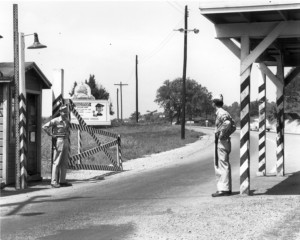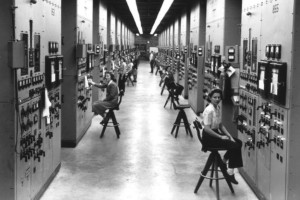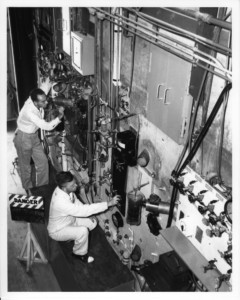Oak Ridge, TN has a history unlike anywhere else in the world! Known as the “Secret City” during World War II, Oak Ridge was the epicenter of the Manhattan Project. To help you prepare for your visit to Oak Ridge, we are sharing three of our favorite stories from the Manhattan Project.

1. The Treasury Loans the Manhattan Project 14,700 tons of Silver
In 1942, the Manhattan Project received an unconventional loan from the U.S. Treasury: 14,700 tons of silver. The Project did not request this silver because it was short on cash, but rather because scientists needed the precious metal for their research.
Col. Kenneth D. Nichols was charged with the task of securing a loan from the U.S. Treasury. In his book The Road to Trinity, Nichols describes a humorous conversation he had with Assistant Secretary of the Treasury, Daniel W. Bell:
“He explained the procedure for transferring the silver and asked, ‘How much do you need?’ I replied, ‘Six thousand tons.’ ‘How many troy ounces is that?’ he asked. In fact I did not know how to convert tons to troy ounces, and neither did he. A little impatient, I responded, “I don’t know how many troy ounces we need but I know I need six thousand tons – that is a definite quantity. What difference does it make how we express the quantity?’ He replied rather indignantly, ‘Young man, you may think of silver in tons, but the Treasury will always think of silver in troy ounces.’”
The silver served its purpose as a conductor and the last of the metal was returned to the Treasury on June 1, 1970. Less than thirty-sixth-thousandths of one percent of the 14,700 tons was lost during the 28 years the silver spent in Oak Ridge!

2. Barred from Engineering College, Jane Puckett Flourishes in Oak Ridge
Women played pivotal roles in the Manhattan Project, often finding professional opportunities that did not exist before the war. The story of Jane Greer Puckett perfectly illustrates the social change that happened in Oak Ridge.
Jane transferred to the University of Tennessee in the summer of 1942 with the intention of studying engineering. However, the College of Engineering discriminated against women at the time, and Jane was instead steered into the College of Business, where she studied statistics.
Ironically, Jane’s knowledge of statistics allowed her to contribute to the advancement of nuclear science in a way most of the male engineering students at UT could only dream of. As a statistician at Y-12, Jane was the first person to verify the production formula for uranium-235, the fissile material for the Little Boy atomic bomb. At the time, Jane was not fully aware of the significance of her work, but she knew that she was making an important contribution to the war effort.
Jane Puckett’s incredible story is featured in The Girls of Atomic City, a New York Times Bestseller that profiles the women who worked and lived in Oak Ridge during the war.

3. Manhattan Project Scientists Discover a New Element
While the pursuit of the atomic bomb was the central mission for Manhattan Project scientists, their research also yielded a number of unexpected discoveries and innovations. In 1945, chemists Jacob Marinsky, Lawrence Glendenin and Charles Coryell were able to isolate a new element, Element 61. At the time, no one had ever produced nor observed it. The new element was dubbed “promethium”, taking inspiration from the mythological Titan who stole fire from the gods and bestowed it upon humanity. Since its discovery, promethium has been used for atomic batteries in spacecraft and missiles.
Learn More About the Manhattan Project
Looking for even more information about the Manhattan Project? Check out our History page to learn all about Oak Ridge’s fascinating past!
